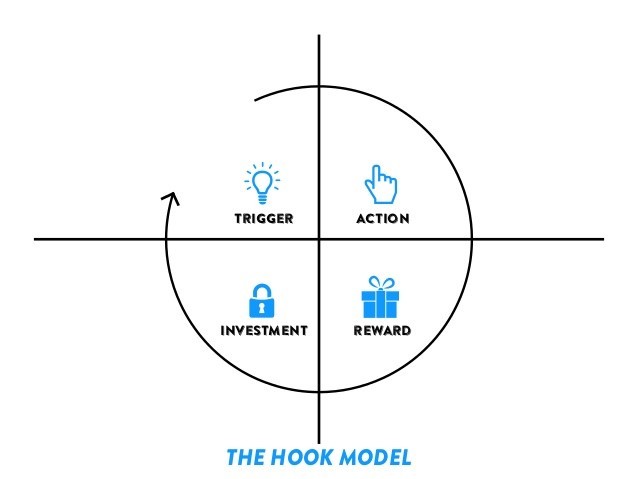Making a habit of working with consumer insights
If you want your company to be future-proof, you should understand your consumers’ wants and needs inside out. But today it is still too much of a hassle for employees to dig through these 100-page PowerPoint reports in search for hidden consumer insights. The fact that we still use these text-heavy, hardly inspirational documents in more than 90% of the time is disturbing. The time is right for a 21st century makeover: short, snappy and visual. And to use these consumer insights to their full potential, working with them should become a habit. But scientists who study habit formation say it is not easy and turning something into a habit takes time – 66 days to be exact.
Habit [noun │ hab·it │ \ˈha-bət\ ] = behavior done with little or no conscious thought
How can we truly succeed in making a habit of working with consumer insights, you ask? By applying the Hook model. A hook is an experience designed to connect the user’s problem to your solution with enough frequency to form a habit. Hooks have four parts: a trigger, an action, a reward and an investment.

Trigger with emotional consumer stories
Every hook starts with a trigger. A trigger tells us what to do next. By providing visual and emotional triggers, both online and offline, you can invite employees to the interesting world of the consumer. Placing these triggers at locations where the employees’ idle time can be claimed is the key to success. At Dorel Juvenile for instance, they placed emotional quotes in meeting rooms and their coffee corner to give employees their daily dose of inspiration.
Activate insights through sharing own observations and ideas
The trigger is followed by the action, defined as the simplest behavior done in anticipation of a reward. However, asking employees to figure out heavy PowerPoints is the opposite of simple. Consumer insights should be inspiring, easy to read and most of all, interactive. Reading a consumer insight is one thing, acting on it is what we are really after. At Danone we shared different consumer insights (referred to as Tiles) which were bundled on Inspiration Walls, representing a specific marketing challenge or problem. After discovering the different insights, we activated the employees to add their own inspiration on these Walls as well, in the form of Observations (creating empathy with shared insights) and Ideas (co-creating relevant solutions for the specific problem).
A reward that makes us want more
After the action follows the reward. If people are rewarded for a specific action, they tend to repeat it. The employees reward each other’s efforts to share their own inspiration in the form of positive feedback. Who will like your observation or idea and what comments will it trigger? At Dorel we saw that social interaction and collaboration was very fulfilling for everyone involved.
An investment to guarantee future visits
The last and most crucial phase of the Hook model is the investment. As the employees invest some time, even if only 15 minutes per week, it becomes easier to recognize consumer insights in their own daily lives and collaborate on more consumer-relevant ideas together. They continue to do so in anticipation of a future reward, getting feedback from colleagues and recognition; that makes future steps through this Hook more likely. This will persuade more employees to do their job with these consumer insights in mind.
The Insight Activation Studio
To stimulate these habits of working with consumer insights, we developed the Insight Activation Studio. We put all the pieces in the right place to make this a habit-forming product. We trigger employees with emotional photos and videos of consumers to pay a quick visit to the studio where they find relevant inspiration in the form of Tiles. By liking an Inspiration Tile, the Tile is automatically saved to their profile. By commenting on a Tile, they will be notified when other colleagues are interested in shaping this inspiration. And by sharing their own Inspiration Tile, they will become curious to know other people’s reactions. By doing all this, it becomes their go-to place for inspiration and collaboration. And just like that, a consumer-inspired way of working and thinking is set in motion.




